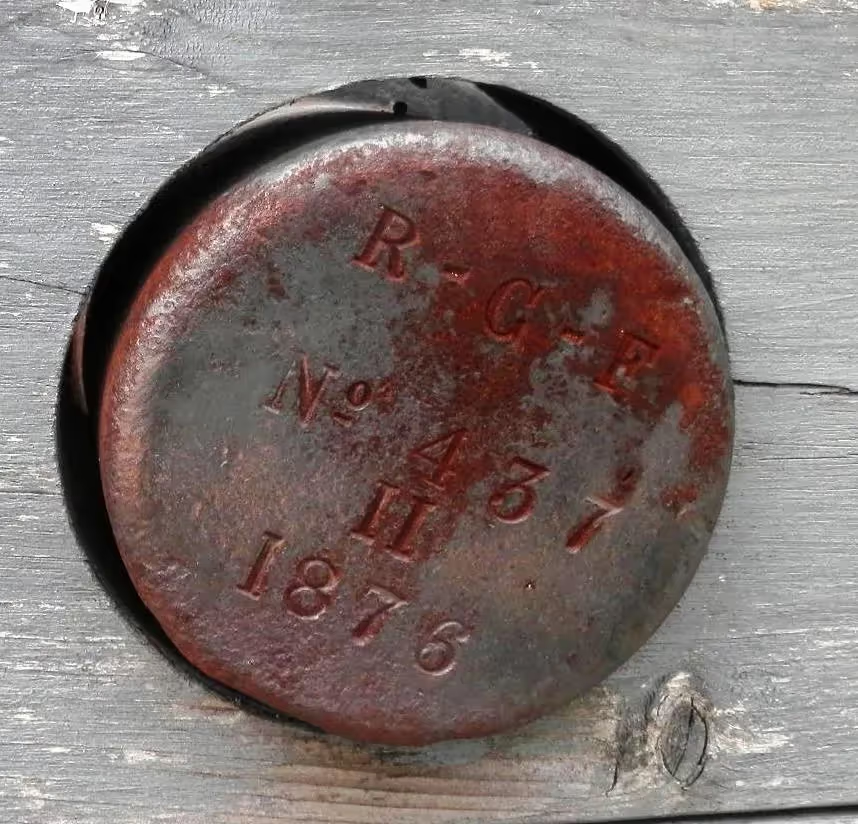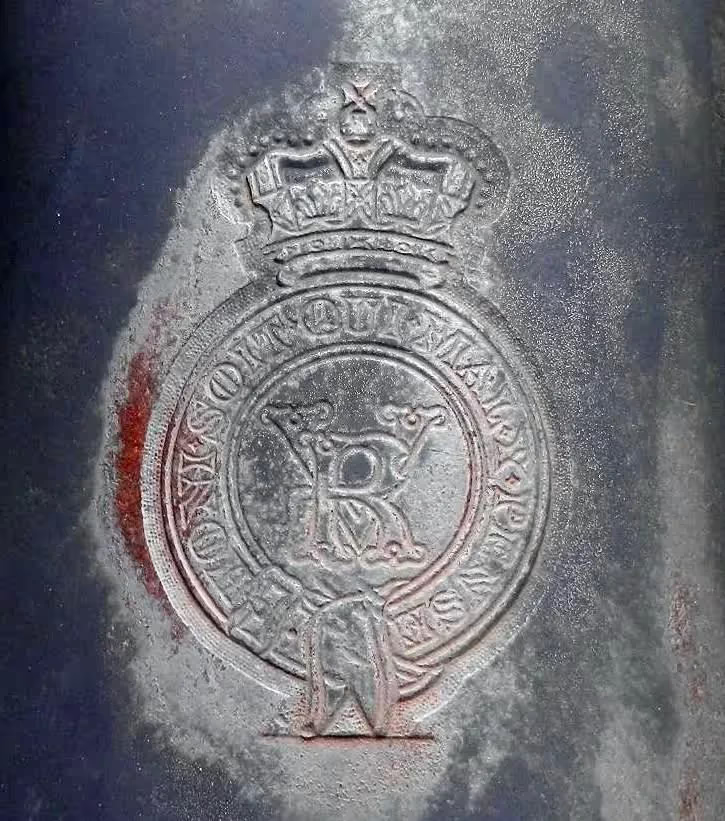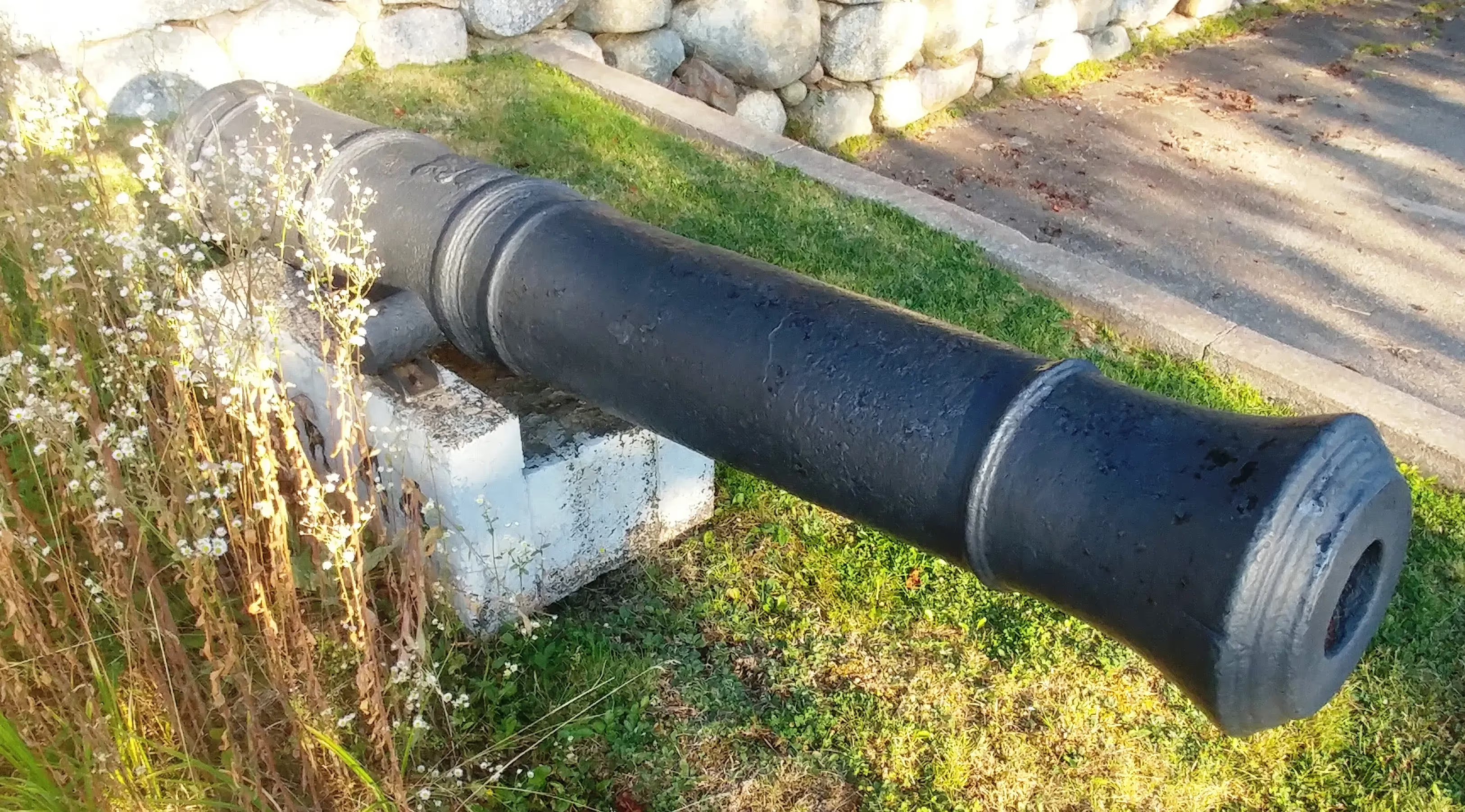Artillery in Canada (9) Nova Scotia: Arcadia, Arichat, Baddeck, Bear River, Black River, Bridgewater, Chester, Chebucto Head, Cheticamp, and Clarks Harbour
Artillery in Nova Scotia, Arcadia, Arichat, Baddeck, Bear River, Black River, Bridgewater, Chester, Cheticamp, and Clarks Harbour
The aim of this website is to locate, identify and document every historical piece of artillery preserved in Canada. Many contributors have assisted in the hunt for these cannons and guns to provide and update the data found on these web pages. Photos are by the author unless otherwise credited. Any errors found here are by the author, and any additions, corrections or amendments to this list of Guns and Artillery in Canada would be most welcome and may be e-mailed to the author at [email protected].
For all official data concerning the Royal Regiment of Canadian Artillery, please click on the link to their website:
Royal Regiment of Canadian Artillery Website
Note: Back in the day, artillery in Canada was referred to by its radio call sign "Sheldrake". It is now referred to by its "Golf" call sign. (Acorn sends)
Nova Scotia
Arcadia
.avif)
.avif)
.avif)


(Author Photos, 9 Sep 2018)
Cast Iron 12-pounder 34-cwt Smoothbore Muzzleloading (SBML) cannon, weight 33-1-17 (3,741 lbs) on the barrel, left and right trunnions corroded, King George II cypher (1727-1760) on the barrel. This cannon is mounted on a concrete stand. Arcadia is just East of Yarmouth.


King George II and his Royal cypher, reigned from 11 Jun 1727 to 25 Oct 1760. (WikipediPhoto)
Arichat, Isle Madame, Cape Breton Island

(Verne Equinox Photo)
Blomefield Cast Iron 24-pounder 50-cwt SBML cannon, weight (4,600 lbs+), maker, Serial No. and cypher unknown, No. 1 of 2, mounted on an iron garrison carriage, at Cannon Lookoff facing Arichat Harbour, Cape Breton.
Blomefield Cast Iron 24-pounder 50-cwt SBML cannon, weight (4,600 lbs+), maker, Serial No. and cypher unknown, No. 2 of 2, mounted on an iron garrison carriage, at Cannon Lookoff facing Arichat Harbour.
Baddeck

(Douglas B. Shand Photo)
7-1/2 foot cannon with a 3-1/2 inch bore, standing in front to the yacht club in Baddeck. This cannon came from the wreck of the HMS Tilbury, lost on 25 Sep 1757. It had previously been left on the Tilbury Rocks, St. Esprit, Cape Breton. The cannon was moved to its current site at the yacht club in the 1970's
The HMS Tilbury (60 guns and 400 men), was lost in a storm in 1757 during the British Navy's attempted blockade of Fortress Louisbourg. HMS Invincible, under the command of Admiral Holbourne, survived the storm and limped back to Portsmouth. In 1758, HMS Invincible set out from Portsmouth with the fleet for another assault on Fortress Louisbourg, but was stranded and lost in the Solent in the UK.
Bear River

(Ivan Smith Photo)
Cast iron possible 12-pounder 34-cwt SBML cannon, buried in the ground as a bollard at the intersection of Main and Upper River Road. Just East of Digby.
German First World War 7.92-mm Maxim Spandau MG 08 Machine gun (Serial Nr. unknown), cenotaph, Royal Canadian Legion Branch No. 22. This weapon was likely captured c1918 by a Battalion of an Infantry Brigade in a Canadian Division with the Canadian Expeditionary Force (CEF), in France.
Black River






(Don Miles Photos)
German First World War 7.7-cm Feldkanone 16 (7.7-cm FK 16.), (Serial Nr. 376), captured on 27 Sep 1918 by the 13th Battalion (Royal Highlanders of Canada) 3rd Infantry Brigade, 1st Canadian Division, Canadian Expeditionary Force (CEF), East of Sains-lez-Marquion, SE of Demain, France. Originally allocated to Hamilton, Ontario, this gun stood in Windsor until it deteriorated and was disposed of. It was rescued and refurbished with wagon wheels and now stands on the front lawn of Major (Ret'd) Don Miles at Black River, just South of Windsor, Nova Scotia.
Kelly Hancock advises that "54th CDN" (Kootenays) is inscribed on top of the gun barrel. This would be the 54th Battalion (Kootenay), 11th Infantry Brigade, 4th Canadian Division, CEF.
The gun's trail data plate records the date of manufacture as 1918. According to Don Miles, at some point the gun was removed from Fort Edward and displayed at the King's College School for Boys in Windsor. Sometime around 1945-47, the boys rolled it down a hill as a Halloween prank. It got away from them and careened straight thru the side of a barn! Don stated that at that time a wheel was sheared off and it likely sustained the damage visible on the left seat back/armour plate. Apparently it ended up in an old gypsum sinkhole in the woods behind the school.
Bridgewater
German First World War 10.5-cm leichtes Feldhaubitze 16 (10.5-cm leFH 16), (Serial Nr. 1638), unknown, no data. This leFH 16 was likely captured ca 1918 by a Battalion of an Infantry Brigade in a Canadian Division with the Canadian Expeditionary Force (CEF), in France. A plaque with the RCA badge on site reads “A Symbol of Valor, erected by the 61-107 Battery Association, 8th Army Field Regiment, RCA, two batteries mobilized in Cranbrook and Edmonton and joined together to serve in Europe 1939-45. We Honour our departed comrades.”

QF 2-pounder pom-pom Mk. VIII, V.S.M. (Vickers, Sons & Maxim LL) Automatic Gun being manned on HMCS Assiniboine, 10 July 1940. (Library and Archives Canada Photo, MIKAN No. 3566434)
QF 2-pounder pom-pom Mk. VIII, V.S.M. (Vickers, Sons & Maxim LL) Automatic Gun , from HMCS Halifax. This gun is being restored with plans that it be mounted in MTB 486 when it is restored. The gun will be stored with HMCS York in Toronto until the restoration of MTB 486 is complete.





(Terry Honour Photos)







(Author Photos, 6 Sep 2018)
9-pounder 6-cwt Muzzleloading Rifle, weight 5-3-26 (670 lbs), left trunnion (R-G-F No. 437, II, 1876), right trunnion blank, Firths Steel No. 4482 on the muzzle, mounted on a wood stand in the Veterans Memorial Park. Flanking the sign for Veterans Memorial Park north position, on the corner of York Street and Victoria Road, No. 1 of 2.





(Author Photos, 6 Sep 2018)
9-pounder 6-cwt Muzzleloading Rifle, weight 5-3-26 (670 lbs), left trunnion (RGF No. 452, II, 1876), right trunnion blank. Mounted on a wood stand flanking the sign for Veterans Memorial Park, south position, on the corner of York Street and Victoria Road, No. 2 of 2.
Chester

Chester War Memorial with a pair of bronze 6-pounder SBML cannons at sunrise.


(B-K Hunters Photos)







(Author Photos, 6 Sep 2018)
Bronze 6-pounder 6-cwt SBML cannon, weight 3----, Serial No. CCCCLXXXIV (484) on the barrel above the trunnions, cast by H & C King (Henry & Cornelius King), 1813 above the King George 3 cypher, broad arrow mark, Henry Phipps, First Earl of Mulgrave, Master General of the Ordnance cypher, (1810-1818), mounted on a concrete stand, North side of the War Memorial. No. 1 of 2.



(B-K Hunters Photos)









(Author Photos, 6 Sep 2018)
Bronze 6-pounder 6-cwt SBML cannon, weight 3----, Serial No. DV (505) on the barrel above the trunnions, cast by H & C King (Henry & Cornelius King), 1814 above the King George 3 cypher, broad arrow mark, Henry Phipps, First Earl of Mulgrave, Master General of the Ordnance cypher, 1810-1818), mounted on a concrete stand, South side of the War Memorial. No. 2 of 2.

Chester Defences plaque, 1750.







(Author Photos, 6 Sep 2018)
Cast Iron 12-pounder 34-cwt SBML cannon, weight 34-0-15 (3,823 lbs), left corroded, (A) on the right trunnion, King George 2 (9 Nov 1683, r. 11 Jun 1727 to 25 Oct 1760) cypher, broad arrow mark, Royal Canadian Legion No. 44. These cannons were set up to defend Chester from Privateer raids in 1750. No. 1 of 2. The A is for Ashburnham; probably supplied by the Crowley family. (Ruth Rhynas Brown)







Cast Iron 12-pounder 34-cwt SBML cannon, weight 33-0-21 (3,717 lbs), left trunnion corroded, (G) on the right trunnion, King George 2 cypher, broad arrow mark, Royal Canadian Legion No. 44. This cannon is mounted on a concrete stand, No. 2 of 2.
King George 2 (9 Nov 1683, r. 11 Jun 1727 to 25 Oct 1760). These cannons were set up to defend Chester from Privateer raids in 1750. No. 1 of 2. The G? stands for Gloucester furnace, run within the Harrisons/Legas partnership. (Ruth Rhynas Brown)
Chebucto Head Battery


(Parks Canada, Citadel Library Photos)
A historic lighthouse which entered service in 1871, stands near concrete gun emplacements which housed BL 6-inch Mk XXIV guns mounted on BL 6-inch Mk V stands at Chebucto Head Battery. None of the guns remain. The fortified battery was armed with three Elswick 6 inch naval guns with associated searchlight, director tower, generators, a long-range optical rangefinder and by 1943 a radar artillery control unit.
Cheticamp, Cape Breton Island



(Les LeBlanc Photos)
6-pounder 7-cwt QF Anti-Tank Gun Mk. III on a Mk. I carriage, Cheticamp War Memorial.
Clark's Harbour, Shelburne County

(Library and Archives Canada Photo, MIKAN No. 3522130)
German MG08 repair, Canadian Armourers, Canadian Motor Machine Gun Brigade, April 1918.

(Internet Photo)
German First World War 7.92-mm Maxim Spandau MG 08 Machine gun (Serial Nr. 142), displayed at the cenotaph. This weapon was captured on 16 Aug 1918 by the 16th Battalion (Canadian Scottish), 3rd Infantry Brigade, 1st Canadian Division, Canadian Expeditionary Force (CEF), at Schwetz Wood, East of Parvillers, France.





